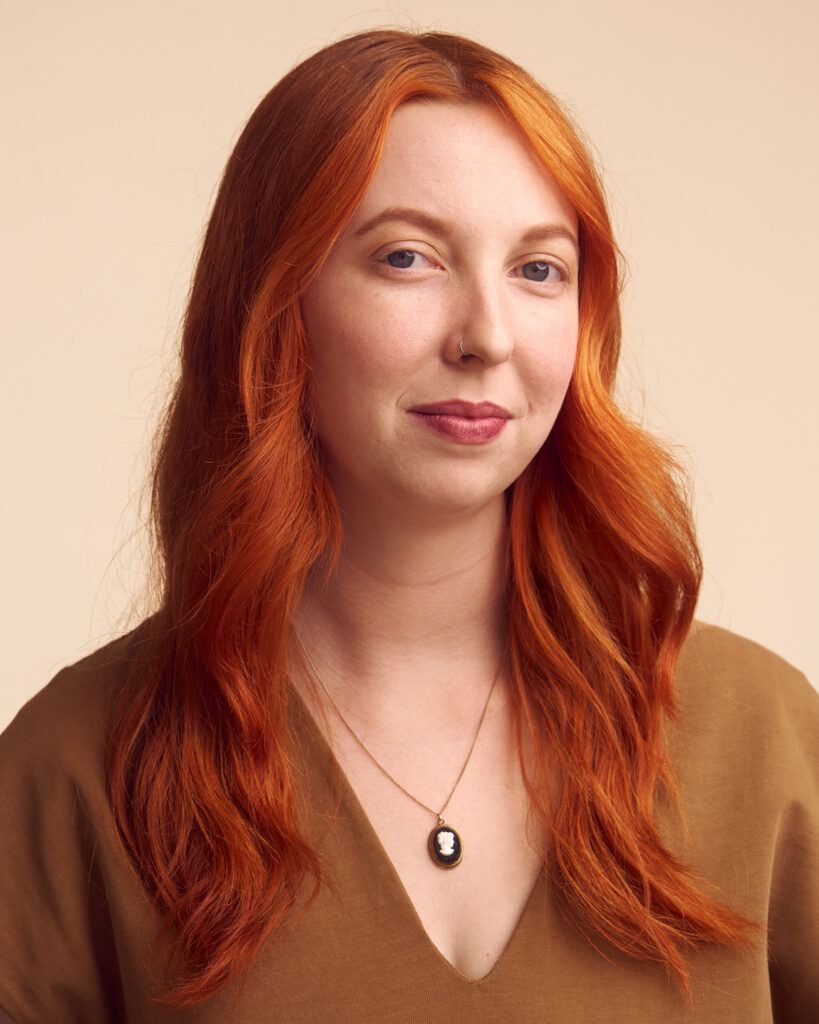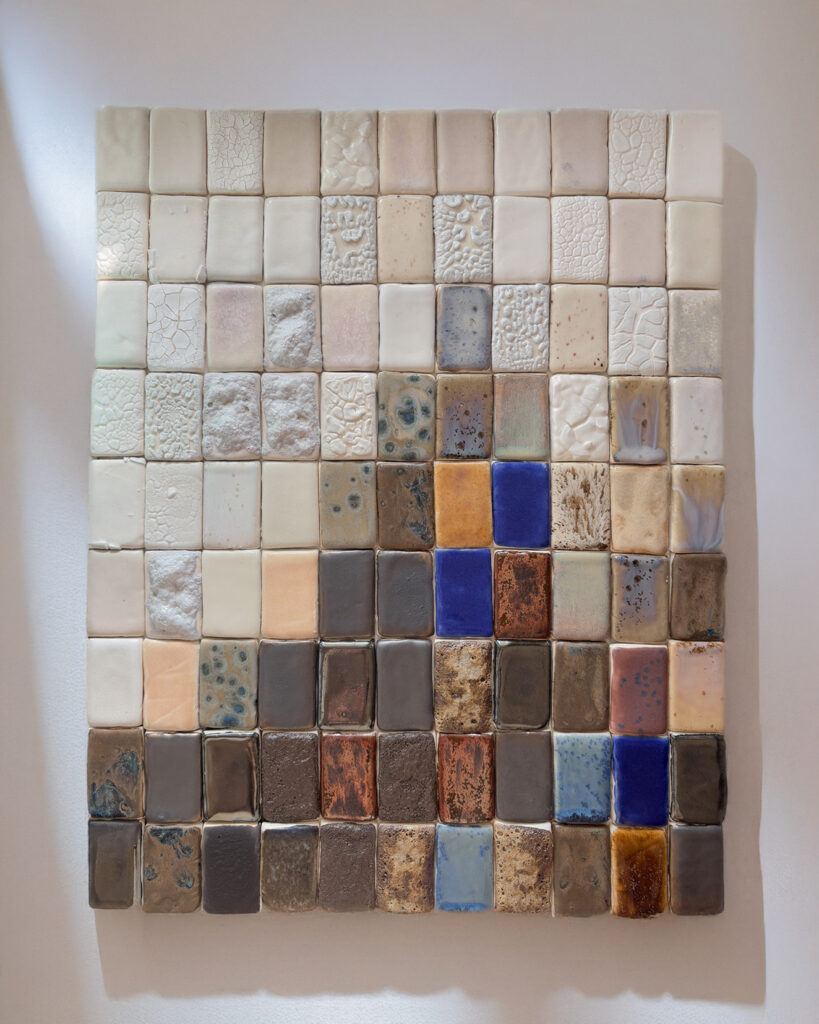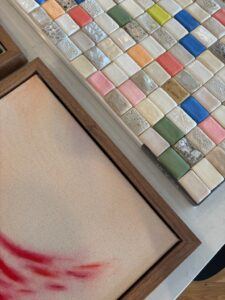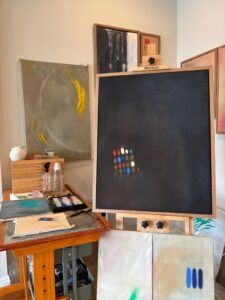
Artist Spotlight on Camilla Crittenden
With a background in both practicing and teaching art, Crittenden approaches her craft with a sense of play and purpose, particularly through her fascination with tiles as modular pieces that tell stories and transform spaces. She balances surrendering control to the unpredictable nature of the materials with guiding the composition, creating works that blur the boundaries between art and environment. Her ultimate goal is for her art to live and breathe within our daily surroundings—embedded in surfaces we touch and experience every day.
MIXD: Your materials—ink, clay, tile, and organic matter—are all inherently unpredictable. Whatdoes that unpredictability mean to you as an artist, and how do you see it reflecting the humanexperience in your work?
CAMILLA CRITTENDEN: Unpredictability is at the heart of my process. Clay can crack, ink can bleed, cyanotype exposures shift with the light. It mirrors how we move through life, constantly responding to what’s beyond our control. I’ve come to see that unpredictability not as a flaw but as something human. It allows vulnerability into the work. Each piece becomes a moment where intention meets accident.
M: Tiles often carry both decorative and architectural histories. How do you approach working with tile as a medium, and what draws you to it in contrast to more sculptural or fluid ceramic forms?
CC: I’m fascinated by tiles as modular pieces that combine craftsmanship with storytelling. I like working with tiles as individual units that puzzle together, creating a larger narrative or surface. When I’m making the tile, I have to give up control to the clay and kiln. There is always unpredictability in how it will turn out. But when I assemble the tiles, I regain some control, deciding how the pieces fit and interact. That balance between surrender and intention is really meaningful to me.

M: What originally inspired you to start working with clay and natural materials?
CC: I was drawn to clay because of its long history and the way it records the touch of the maker. What really fascinates me is how unpredictable it can be, how it changes in the kiln, how glazes move or crack unexpectedly. Natural materials have that same quality. They respond to time, light, and handling in ways you cannot fully control. That unpredictability feels honest and alive, and it is what keeps me coming back.
M: Is there a specific plant, natural form, or landscape that you keep coming back to in your work?
CC: The textures and formations of the Ozark Mountains are a constant source of inspiration for me. I’m drawn to the layers of exposed rock, the weathered cliffs, and the way water has shaped the landscape over centuries. The cracks, ridges, and subtle color shifts in the stone often influence the surfaces and finishes I create on my tiles.
CAMILLA CRITTENDEN
I’m fascinated by tiles as modular pieces that combine craftsmanship with storytelling. I like working with tiles as individual units that puzzle together, creating a larger narrative or surface.
M: What colors or textures are you currently drawn to?
CC: I’m drawn to earthy tones such as blues, rusts, and mineral greens, and to the raw textures that emerge in the kiln. I love when glazes break and flow like molten lava across a tile, leaving ridges, pools, and glossy edges that feel almost volcanic. There is a tension in those surfaces, as if the piece is still in the process of forming even though the clay is permanent and unchanging.
M: Could you share any upcoming exhibitions, projects, or collaborations that we should keep an eye out for?
CC: Yes, I just finished a series called “The Blue Hour” for Kaleidoscope Collective in Rogers, AR. It’s a collection of cyanotype self-portraits on ceramic tiles, exploring unseen emotions and inner worlds. I’m also in the early stages of incorporating beadwork on merino wool into my tile pieces.
M: How do you envision your work in relation to architectural and interior design?
CC: I love the idea of art living alongside people, integrated into their spaces. Not just hung on walls but embedded into the surfaces we touch and move around every day. Tiles, especially, lend themselves to that. I think of my work as something that can blur the line between art and environment, allowing the imagery and materials to become part of the structure itself.


Special thank you to Camilla for sharing her practice with us! You can learn even more about her HERE and shop the latest works at MIXD Gallery.
Article Credits
Artist Portrait by Kes Efstathiou